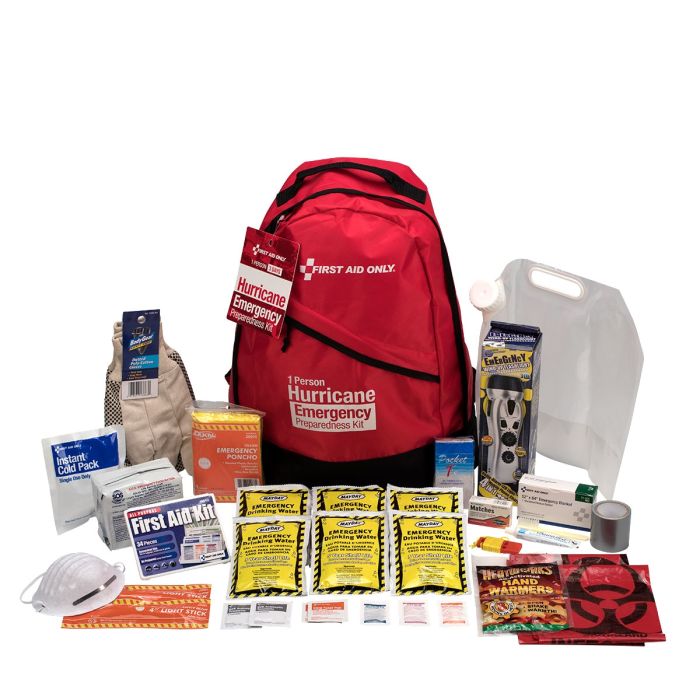Stay Safe with Emergency Preparedness: Professional Tips and Approaches
Stay Safe with Emergency Preparedness: Professional Tips and Approaches
Blog Article
Vital Emergency Readiness Tips for Survival
In today's unpredictable world, being gotten ready for emergencies is not simply a referral yet an essential need. Ensuring your safety and security and that of your liked ones during unexpected dilemmas needs mindful preparation and insight. From constructing a well-equipped emergency package to developing clear interaction channels and emptying paths, there are numerous important steps that can make a significant distinction when faced with hardship. By proactively addressing these vital elements of emergency readiness, you can substantially improve your chances of survival in tough situations.
Building an Emergency Situation Kit
Begin by including non-perishable food products like canned products, granola bars, and dried fruits that have a long life span and do not require cooking. Remember to pack a manual can opener. Additionally, shop at the very least one gallon of water per individual daily for a minimum of 3 days in strong containers.
Fundamental emergency treatment supplies are important. Include items such as adhesive tapes, antiseptic wipes, painkiller, and any type of needed prescription medicines. A flashlight with extra batteries, a multi-tool, and a whistle should additionally remain in your set. Keep copies of important documents like recognition papers, insurance plans, and emergency call info in a waterproof container. By assembling a well-balanced emergency package, you can much better prepare yourself for unanticipated events and raise your possibilities of staying risk-free during a situation.
Creating a Communication Strategy
Assembling an emergency situation package with vital products sets a solid structure for preparedness; now, transforming to the development of a communication strategy is crucial for making sure effective coordination and info circulation during times of crisis. A well-balanced interaction strategy is important for maintaining individuals educated, connected, and safe in emergency situation scenarios. Beginning by establishing a chain of communication that consists of household members, neighbors, and appropriate authorities. Make sure that every person knows how to reach each other and assign an out-of-town call as a main factor for details sharing. Utilize multiple communication techniques such as message messages, telephone call, social media, and emergency alert systems to make sure info gets to every person without delay. Exercise your interaction strategy routinely to guarantee everybody understands their duties and duties. Furthermore, take into consideration aspects like language obstacles, availability requirements, and technical restrictions when establishing your communication strategy. An effective interaction strategy can make a considerable distinction in handling emergencies efficiently and safeguarding the health of all entailed.

Establishing Emptying Routes
To guarantee reliable emergency action and precaution, developing clear evacuation paths is extremely important in preparedness planning. Discharge routes ought to be determined and connected to all individuals in a provided location to ensure a swift and organized emptying in times of situation. When establishing evacuation paths, it is vital to think about several alternatives to make up different scenarios, such as fires, floods, or various other emergency situations that might obstruct primary escape paths.
The selected discharge courses need to lead to assigned risk-free locations where people can look for sanctuary and wait for more guidelines or assistance (visit our website). These routes need to be conveniently available and well-marked, thinking about the requirements of all people, including those with specials needs or mobility restrictions. Normal drills and practice runs along these emptying paths can aid familiarize people with the retreat courses and guarantee a much more reliable evacuation process throughout real emergencies
Along with physical emptying courses, it is crucial to have alternative communication approaches in position to relay emptying directions and updates properly. By establishing and routinely examining discharge courses, communities can enhance their general emergency situation readiness and feedback capabilities.
Learning Basic First Aid
One fundamental facet of emergency situation readiness is obtaining understanding in fundamental initial help treatments. In times of dilemma or disaster, being able to give immediate medical aid can make a significant distinction in conserving lives. Learning standard initial aid gears up people with the abilities to react and examine to clinical emergencies and usual injuries successfully.
Fundamental emergency treatment training normally covers vital techniques such as mouth-to-mouth resuscitation, wound treatment, bandaging, splinting, and acknowledging signs of shock or respiratory system distress. view it. Comprehending exactly how to carry out these standard treatments properly can support an individual's condition up until expert medical help arrives
Additionally, having a fundamental very first aid kit readily available is essential in emergency situations. The package should consist of essential supplies like bandages, disinfectant wipes, gauze pads, glue tape, scissors, handwear covers, and tweezers. Recognizing just how to make use of these things properly can prevent infections, quit hemorrhaging, and give convenience to those in requirement.
Protecting Essential Files

Verdict
Constructing an emergency set, developing a communication strategy, establishing discharge routes, finding out standard initial aid, and safeguarding important files are crucial steps to take. It is crucial to focus on emergency situation preparedness to guarantee preparedness for any kind of potential crises that may develop.
From constructing a well-equipped emergency set to developing clear interaction networks and discharge routes, there are several important actions that can make a substantial distinction in the face of difficulty.To ensure effective emergency response and safety steps, establishing clear emptying paths is critical in preparedness planning. When establishing evacuation routes, it is important to consider multiple options to account for various circumstances, such as fires, floodings, or various other emergency situations that may block primary retreat courses.
Normal drills and method runs along these emptying routes can help familiarize individuals with the getaway paths and guarantee a more reliable discharge procedure during actual emergency situations.
Developing an emergency kit, creating an interaction plan, establishing discharge paths, learning basic initial aid, and securing vital papers are vital steps to take.
Report this page